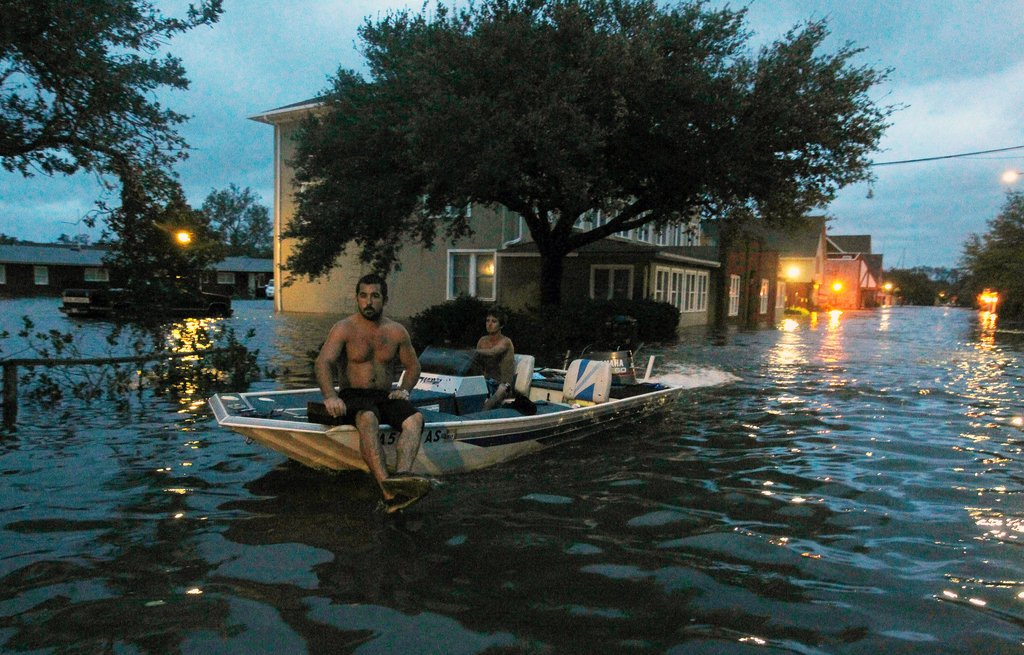Rising Sea Levels: A Catastrophe For Coastal Communities

Table of Contents
The Science Behind Rising Sea Levels
The scientific consensus is clear: sea level rise is accelerating, primarily due to two factors: thermal expansion and the melting of glaciers and ice sheets. Understanding these processes is crucial to grasping the scale of the problem.
-
Thermal Expansion: As the Earth's climate warms due to global warming and climate change, the oceans absorb a significant amount of heat. This heat causes the water molecules to expand, increasing the overall volume of the ocean and contributing to sea level rise. This thermal expansion accounts for a significant portion of the observed sea level rise.
-
Glacier and Ice Sheet Melt: The accelerated melting of glaciers and ice sheets in Greenland and Antarctica is another major contributor to rising sea levels. Data shows a dramatic increase in the rate of ice melt in recent decades, largely attributed to human activities that increase greenhouse gas emissions. This melting adds vast quantities of freshwater to the oceans, further raising sea levels.
-
The Role of Human Activities: The overwhelming scientific evidence points to human activities, particularly the burning of fossil fuels, as the primary driver of climate change and the subsequent acceleration of sea level rise. The release of greenhouse gases traps heat in the atmosphere, leading to the warming of the oceans and the melting of ice.
Impacts on Coastal Communities
The consequences of rising sea levels for coastal populations are devastating and far-reaching. The increased frequency and intensity of extreme weather events exacerbate these impacts.
-
Increased Coastal Flooding: Coastal communities are experiencing more frequent and severe flooding events, inundating homes, businesses, and critical infrastructure.
-
Loss of Land and Displacement: The relentless erosion of coastlines is leading to the loss of land and the displacement of populations, forcing people to abandon their homes and livelihoods.
-
Infrastructure Damage: Roads, buildings, power grids, and other vital infrastructure are increasingly vulnerable to damage from coastal flooding and erosion, resulting in significant economic losses and disruption of services.
-
Saltwater Intrusion: Saltwater intrusion into freshwater sources is contaminating drinking water supplies and harming agriculture, threatening food security and public health.
-
Significant Economic Losses: The cumulative effects of coastal erosion, flooding, and infrastructure damage lead to substantial economic losses, impacting tourism, fisheries, and other coastal industries.
Vulnerable Populations and Regions
The impacts of rising sea levels are not evenly distributed. Certain regions and populations are disproportionately vulnerable.
-
Low-Lying Islands: Small island developing states (SIDS) face an existential threat from rising sea levels, with many facing imminent inundation and displacement of their entire populations.
-
Developing Countries: Developing countries often lack the resources and infrastructure needed to adapt to rising sea levels, making them particularly vulnerable to the devastating consequences.
-
Coastal Cities: Densely populated coastal cities are facing significant challenges in managing the risks associated with rising sea levels, including increased flooding and infrastructure damage.
-
Marginalized Communities: Marginalized communities within coastal regions often lack the resources and political power to protect themselves from the impacts of rising sea levels, exacerbating existing inequalities.
Mitigation and Adaptation Strategies
Addressing the challenge of rising sea levels requires a two-pronged approach: mitigation and adaptation.
-
Climate Change Mitigation: Reducing greenhouse gas emissions through the transition to renewable energy sources, improved energy efficiency, and sustainable land use practices is crucial to slowing the rate of sea level rise.
-
Sea Level Rise Adaptation: Coastal protection measures, such as sea walls, improved drainage systems, and the restoration of coastal ecosystems like mangroves, can help communities adapt to the impacts of rising sea levels.
-
Sustainable Development: Promoting sustainable development practices in coastal zones, including responsible land use planning and coastal zone management, is vital to minimizing the vulnerability of coastal communities.
-
Early Warning Systems and Disaster Preparedness: Investing in early warning systems and disaster preparedness plans can help communities to better respond to and mitigate the impacts of coastal flooding and other extreme weather events.
Conclusion
Rising sea levels pose a grave and immediate threat to coastal communities worldwide. The scientific evidence is irrefutable, and the impacts are already being felt across the globe. Understanding the devastating effects of rising sea levels is crucial. Take action today to protect our coastal communities and mitigate the effects of rising sea levels. Learn more, support organizations working on climate change mitigation and adaptation, and advocate for policies that address this global challenge. We must act now to prevent further catastrophe and build a more resilient future for coastal populations everywhere.

Featured Posts
-
 Otkaz Ot Vizita V Kiev Makron Starmer Merts I Tusk 9 Maya
May 10, 2025
Otkaz Ot Vizita V Kiev Makron Starmer Merts I Tusk 9 Maya
May 10, 2025 -
 Solve Nyt Strands Game 357 February 23 Complete Guide
May 10, 2025
Solve Nyt Strands Game 357 February 23 Complete Guide
May 10, 2025 -
 Elizabeth Stewart And Lilysilk A Spring Collection Collaboration
May 10, 2025
Elizabeth Stewart And Lilysilk A Spring Collection Collaboration
May 10, 2025 -
 Elon Musks Net Worth Falls Below 300 Billion Tesla Tariffs And Market Volatility
May 10, 2025
Elon Musks Net Worth Falls Below 300 Billion Tesla Tariffs And Market Volatility
May 10, 2025 -
 The Unseen Hand Kushners Guidance On Trumps Middle East Strategy
May 10, 2025
The Unseen Hand Kushners Guidance On Trumps Middle East Strategy
May 10, 2025
